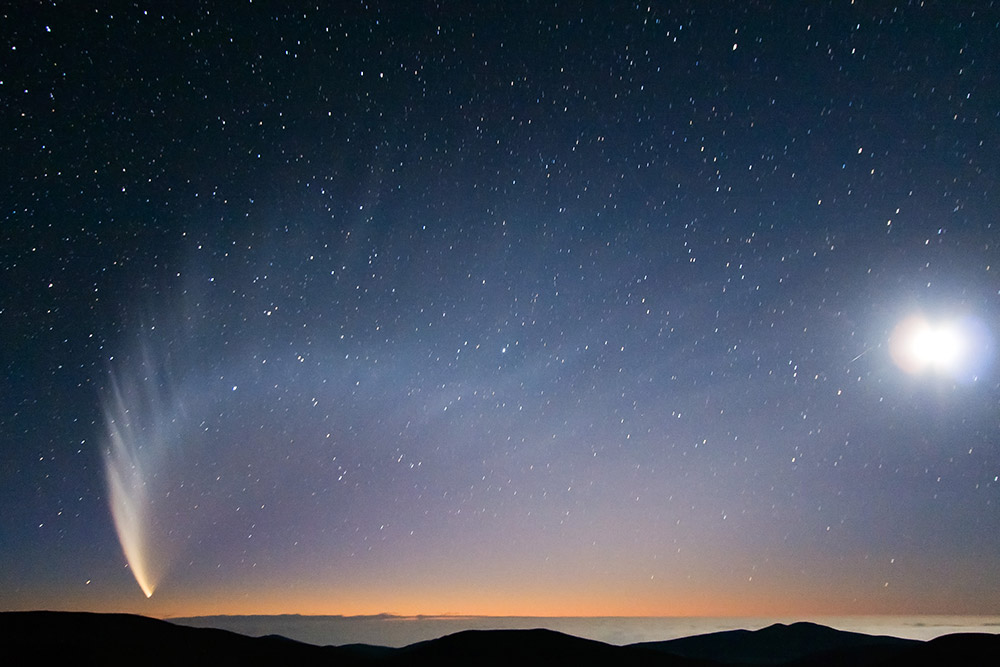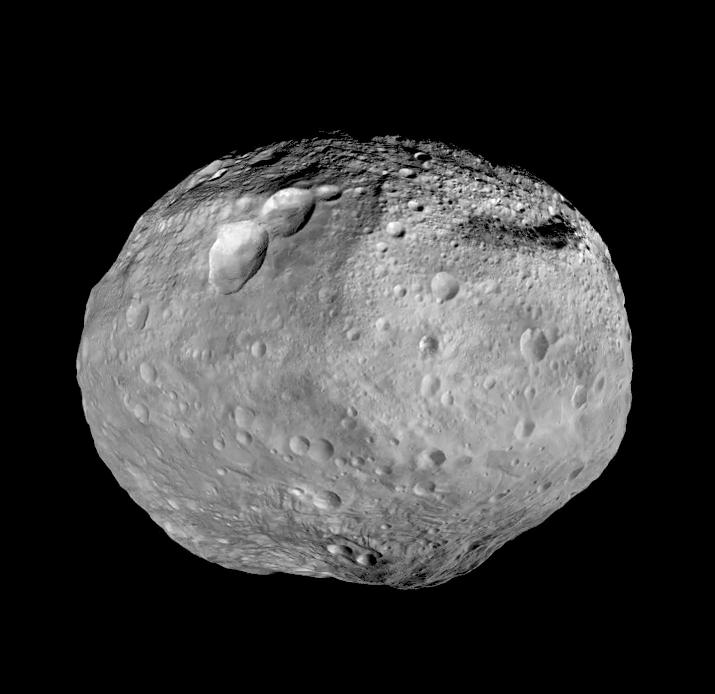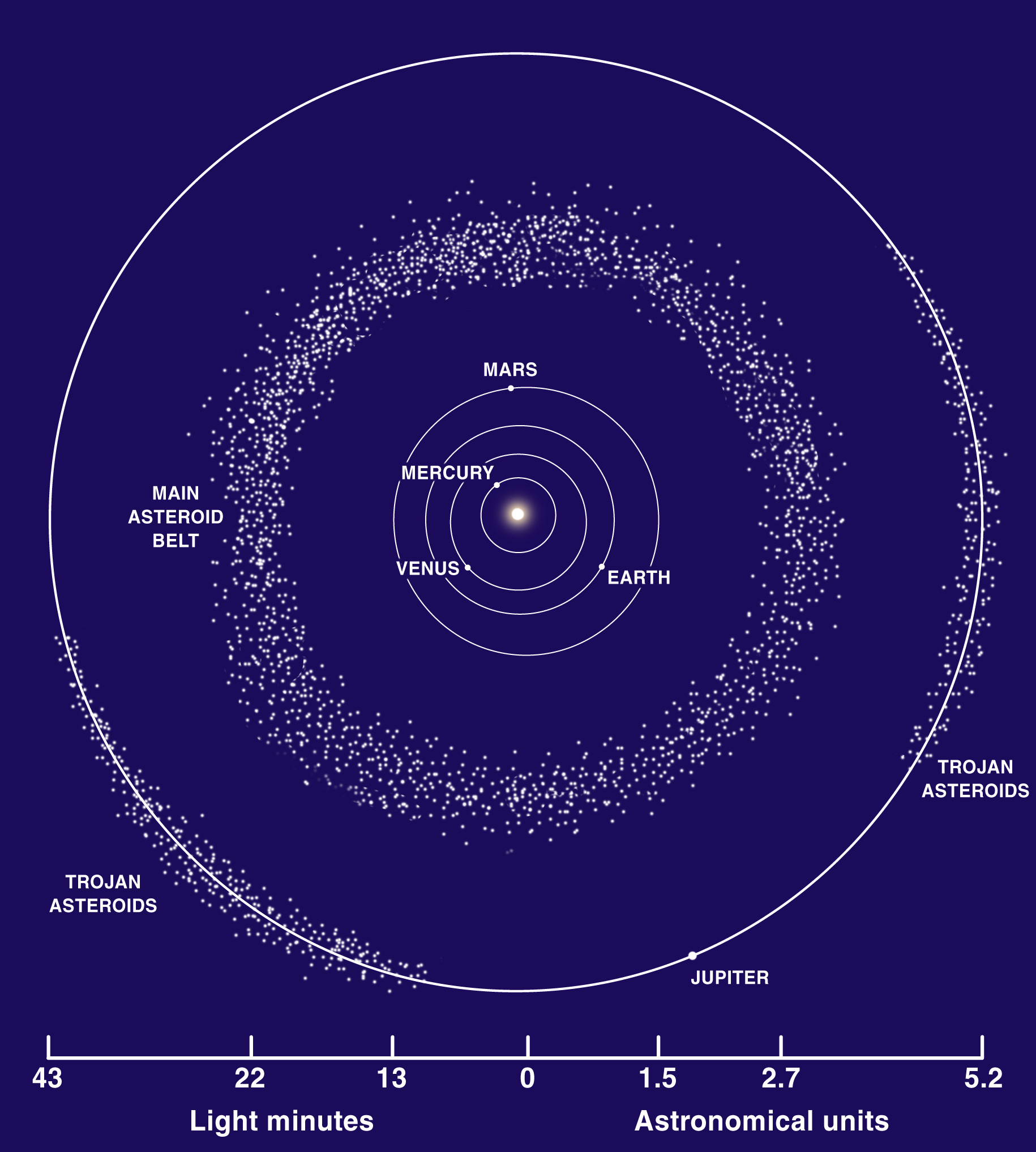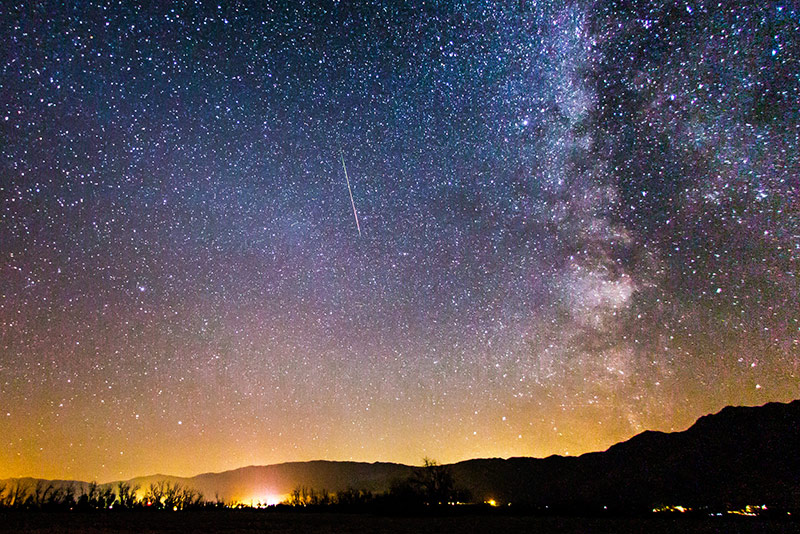Introductory Astronomy for Undergraduates
Comets, Meteors, and Asteroids
(Source: Curious About Astronomy? Ask an Astronomer-
http://curious.astro.cornell.edu/our-solar-system/comets-meteors-and-asteroids)
Comets, meteors, and asteroids are often grouped together since they are all basically the same thing: small pieces of rock and/or ice that aren't part of a major planet.
Comets
Comets are objects composed mostly of ice and dust that grow tails when they approach the sun. All comets have a nucleus, which is the hard rock/ice object. When a comet nucleus nears the sun, solar energy begins to heat the ice and vaporize it. The gas flies off the comet, sometimes violently enough to break the nucleus apart, and throws dust up with it. The gases form a cloud around the nucleus called the coma. Some of the gas is stripped of electrons and blown back by the solar wind. This forms a bluish colored ion tail. The dust particles are pushed away from the comet by solar radiation, forming a dust tail that can be many millions of miles long. The dust tail is the easiest to see with the unaided eye, but occasionally the ion tail is visible as well. Each time a comet passes close to the sun, it loses more of its ice. Eventually, after many passes, the comet may no longer have enough material to form tails. Its surface will be covered by dark dust and it will look more like an asteroid.

(Credit: S. Deiries/ESO)
Comet McNaught over the Pacific Ocean.
In this extraordinary picture taken from Paranal Observatory, the
incomparable view offered by Comet C/2006 P1 (McNaught), which reached
its perihelion (the point at which its closest to the sun) in January 2007, unexpectedly becoming the brightest
comet in the previous 40 years. The majestic comet, accompanied by the
crescent Moon (on the right) is setting at twilight over the “sea of
clouds” which typically covers the Pacific Ocean, only 12 km away from
the observatory.
Comets come from two places in the Solar System: the Oort Cloud and the Kuiper Belt. The Oort Cloud is a spherical halo of comets surrounding the Solar System at a distance of around 50,000 Astronomical Units. (One Astronomical Unit equals the distance from Earth to the Sun.) Comets from the Oort Cloud have long orbital periods and can enter the solar system from many different directions. The Kuiper Belt is a ring of icy objects beyond the orbit of Neptune (30-100 AU). It lies (more or less) in the plane of the solar system and is a reservoir for the short period comets that we see. The first Kuiper Belt Objects (KBOs) were discovered in the early 90s, and they captured the interest of astronomers because they are probably the oldest, most pristine material in the solar system. Studying KBOs is difficult because they are distant and very small, but more have been discovered over the last few years as telescope and instrument technologies have improved. Astronomers now know of a few hundred KBOs, including a large object called Quaoar which is half the size of Pluto. Quaoar is the largest solar system object discovered since Pluto and Charon, and it reinforces the idea that there might be other large KBOs that are still undiscovered.
Asteroids
Asteroids are the small rocky objects in the Solar System. The largest asteroid is Ceres, which is 933 kilometers (580 miles) across. The smallest asteroids that we've observed in detail are only tens of meters in size, but there are probably a great number of small rocks in space that are currently too small for us to detect. Many asteroids, including all of the largest asteroids, orbit the sun between Mars and Jupiter in the Asteroid Belt. The Trojan asteroids share Jupiter's orbital path, but stay 60 degrees ahead or behind Jupiter. Near-Earth Asteroids orbit the sun in the vicinity of the rocky terrestrial planets and pose the greatest threat to Earth. We think that the total mass of all the asteroids combined is less than that of the Moon.
The asteroid population is amazingly diverse - each one seems different! Some asteroids such as Mathilde are very light and are probably "rubble piles" made up of lots of small particles loosely held together. Other asteroids are metallic (for example Psyche) or pieces of solid rock (Eros, visited by the NEAR spacecraft, is an example) . Sometimes asteroids have small moons or travel in equal-sized pairs. Most asteroids have unusual shapes because they have experienced many collisions and do not have a strong enough gravity to pull themselves back into a sphere. Asteroids are not visible to the unaided eye, but some can be seen with small telescopes or even binoculars.

(Credit: NASA/JPL-Caltech/UCLA/MPS/DLR/IDA)
Full View of Vesta. As NASA's Dawn spacecraft takes off for its next destination, this mosaic synthesizes some of the best views the spacecraft had of the giant asteroid Vesta. Dawn studied Vesta from July 2011 to September 2012. The towering mountain at the south pole -- more than twice the height of Mount Everest -- is visible at the bottom of the image. The set of three craters known as the "snowman" can be seen at the top left. More information about Dawn is online at http://dawn.jpl.nasa.gov.
|
Asteroid Belt:
The asteroid belt is a region between the orbits of Mars and
Jupiter. This is where most of the Solar System's asteroids are
located. More than 100,000 asteroids have been found within the
asteroid belt. The masses of these asteroids are less than the
masses of the planets, but it is interesting to think that if
more asteroids were found, could they potentially form a planet?
Asteroids are small rocky solid bodies that orbit the sun. They
can be a few meters long to hundreds of kilometers in diameter. Asteroids are material left over from the formation of the solar system.
One theory suggests that they are the remains of a planet that was
destroyed in a massive collision long ago. More likely, asteroids are
material that never coalesced into a planet. In fact, if the estimated
total mass of all asteroids was gathered into a single object, the
object would be less than 1,500 kilometers (932 miles) across, less than
half the diameter of our Moon.
The asteroid belt lies in the
region between Mars and Jupiter. The Trojan asteroids lie in Jupiter's
orbit, in two distinct regions in front of and behind the planet.

(Credit:NASA-Lunar and Planetary Institute)
Watch Dawn Mission -Video Leonard Nimoy narrates this animated 13-minute glimpse of NASA's Dawn mission that was launched in October 2007. The movie features a look into the planning, instrumentation and technological challenges of this mission into the heart of the asteroid belt.
Reading Resources:
Asteroid Belt (http://www.astro.cornell.edu/~randerson/Inreach%20Web%20Page/inreach/asteroids.html)
Asteroids -In Depeth (https://solarsystem.nasa.gov/planets/asteroids/indepth)
Meteors
Meteors are the short, white trails across the sky that we call "shooting stars." They are caused by small pea-sized pieces of inter-planetary dust that burn up when they slam into the Earth's atmosphere at high speeds. Meteor showers happen when Earth passes through the orbital path of a comet that left a lot of dust behind. Earth plows through the dust, and the particles form meteors as they hit the atmosphere. Occasionally a small rock may fall through the atmosphere, causing an extremely bright and colorful streak across the sky called a fireball. (These are often mistaken for comets, but comets do not streak across the sky quickly; they are usually visible for many days.) Sometimes fireball rocks are not completely vaporized, and they impact Earth's surface. A rock that fell from space this way is called a meteorite.

(Credit: slworking2 on Flickr, CC BY-NC-SA 2.0)
(Credit: slworking2 on Flickr, CC BY-NC-SA 2.0)